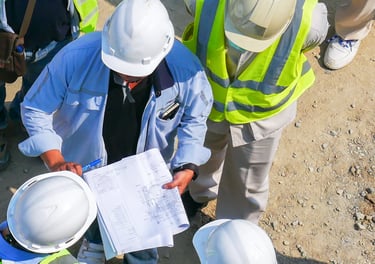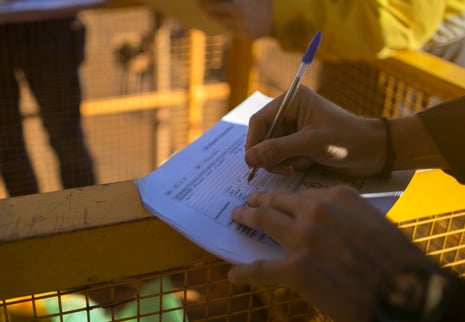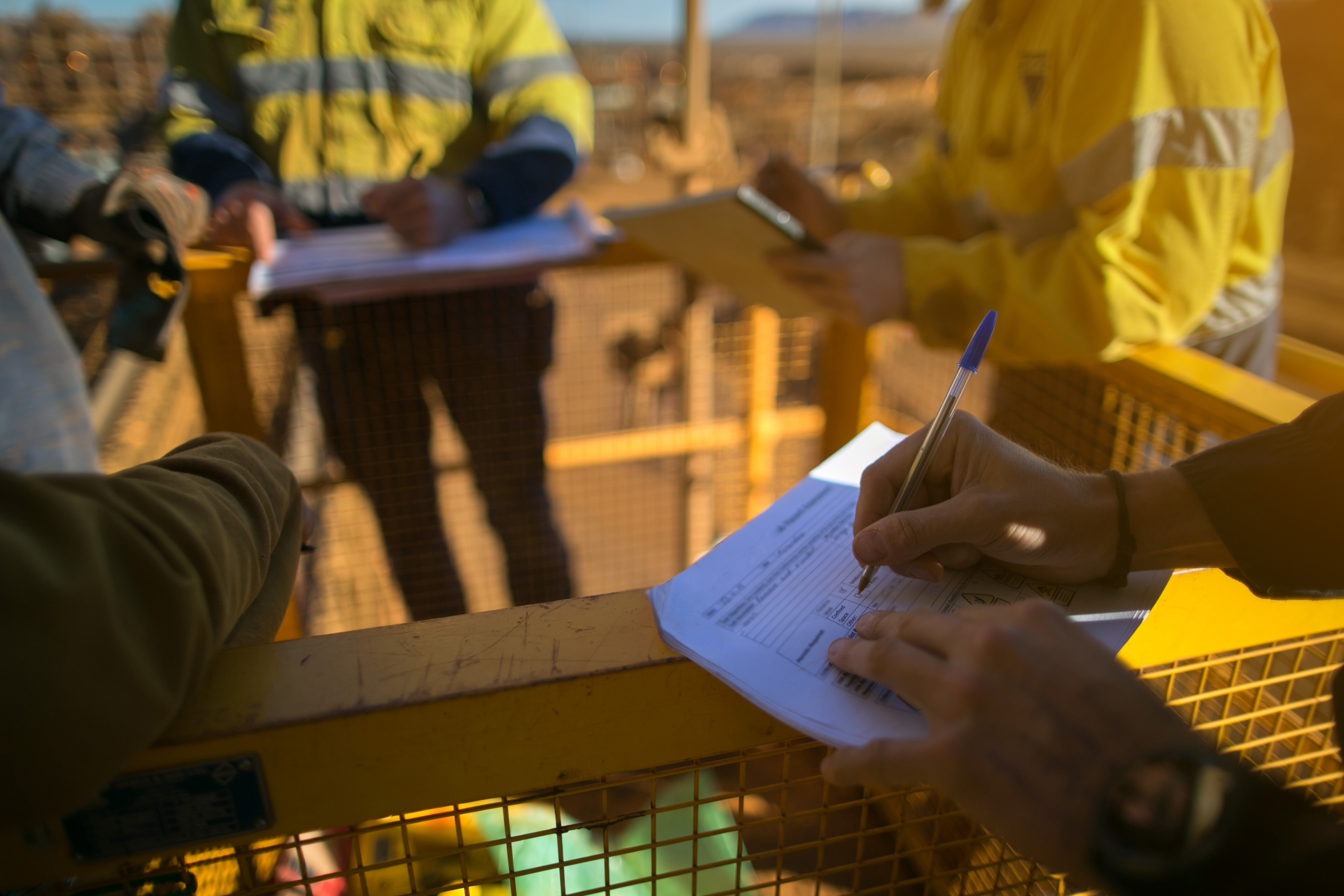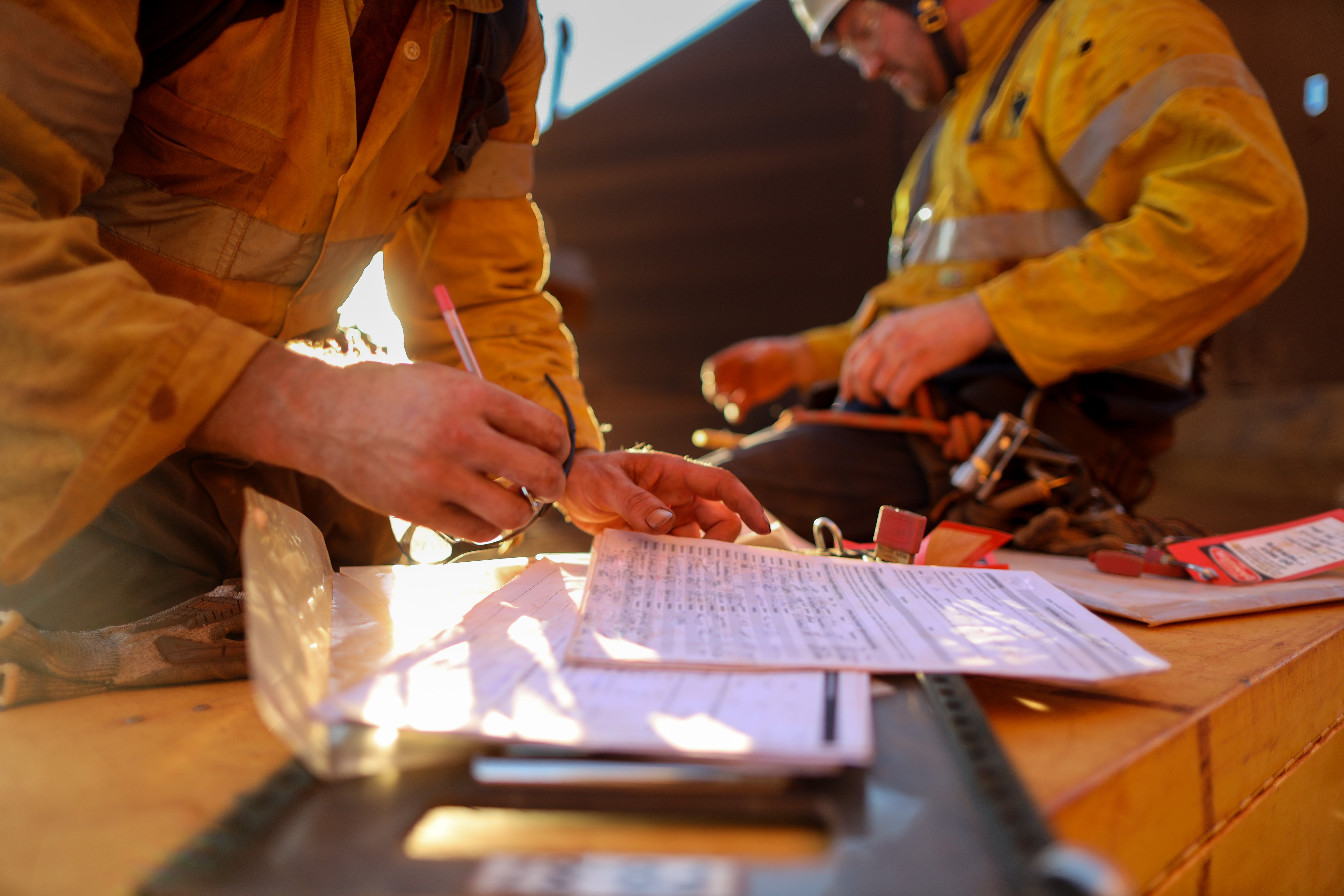This post is part of a series on energy-based hazard recognition. Access Part 1 here, Part 2 here, and Part 3 here.
As the other posts in this series discuss, many serious injuries and fatalities (SIFs) to utility workers come from an unwanted release of hazardous energy. Through their jobs, workers risk falls from elevation, strikes from motor vehicles, electric shocks, and more — any of which contain enough energy to kill or seriously injure them.
To prevent these SIFs, safety leaders have developed tools to heighten awareness of hazardous energy. The Energy Wheel highlights 10 common sources of energy on industrial sites, while the 13 high-energy hazards point out the task-based risks that cause a majority of SIFs.
Understanding the sources of hazardous energy is beneficial and goes a long way toward keeping workers safe. But how do EH&S managers use these tools on a day-to-day basis? How are utilities applying these concepts on the job to improve the safety of their workers?
Let’s explore ways that utilities can put the concepts of the Energy Wheel and the 13 high-energy hazards into practice.
How to apply the Energy Wheel on utility work sites
The most obvious way the Energy Wheel and high-energy hazards can improve worker safety is during pre-work safety briefings.
“On a day-to-day basis, crews are expected to prepare a tailboard, which is an evaluation of the hazards for the day’s work and the appropriate mitigations for each hazard,” says Brad D. Bargmeyer, senior advisor with Southern California Edison.

During tailboard sessions or other safety briefings, the Energy Wheel can help your crew identify sources of hazardous energy they may encounter that day. (Remember: Workers can only identify about 45% of the hazards they actually face without a reminder to search for specific, unobtrusive sources, such as chemical/radiation and contents under pressure.)
To start, ask one crew member at a time to identify a source of hazardous energy from the Energy Wheel on site. Supervisors may prefer to discuss potential hazards as a group, but experts suggest asking individuals to speak up gets better engagement.
“Many people will not speak if you leave it completely up to them,” writes Paul Axtell in his book Meetings Matter: 8 Powerful Strategies for Remarkable Conversations.
“If you don’t call on people, you are likely to see the same pattern in every meeting. Mary speaks first, Susan speaks second, John speaks third, Renee always waits till the end of the topic and then she joins in. Randy and Richard never speak.”
Engaging workers is critical for safety. Veteran staff know their jobs well, bringing personal experience to safety discussions. Likewise, rookies with fresh eyes may spot hazards others overlook. Both groups of workers are vital for building a comprehensive overview of the day’s safety risks. Plus, encouraging bottom-up communication increases buy-in to your health and safety program that keeps workers united.
Using the Energy Wheel in this way may identify the high-energy hazards present, but these 13 scenarios still deserve special attention due to their severity. As part of the safety briefing, ask workers to judge the likelihood of encountering these hazards during the day’s activities. Depending on the work schedule, some risks are more likely than others.
“We find that workers tend to focus on the hazards that are most present in their work,” says Bargmeyer. “Other industries will emphasize different hazards.”
For example, pipefitters installing a new underground gas main face a higher risk of trench collapses and suspended loads, while vegetation managers trimming trees along a highway are more likely to sustain a motor vehicle strike or an electric shock.
At the end of the safety briefing, make sure to give the opportunity for anyone to speak up about hazards not already discussed. Certain people may only raise concerns after everything else has been covered — yet these concerns may save lives.
“[But] be sure to let people know that if they don’t have anything to add, they can say so — you are simply inviting them to add to the conversation,” writes Axtell.
Adding the Energy Wheel into job hazard analyses
This systematic approach to finding hazardous energy is also good preparation for job hazard analyses (JHAs). These formal assessments are now standard practice in utility work as a way to clarify the tasks, environment, tools, and controls applied to any hazardous activity.
Before starting a high-risk task, workers fill out a JHA form that forces them to stop and think through the specifics of their assignment and what risks they may incur. On these forms, they note clear descriptions of the work, the hazards, and the controls used. By thinking through the steps of their job ahead of time and, importantly, writing them down, workers engage in mental rehearsal that can improve their on-the-job performance.

These analyses can be further improved by introducing the Energy Wheel and the high-energy hazards. By keeping a copy of the Energy Wheel available as workers fill out these forms, they can walk step-by-step through the sources of energy and keep them in mind when they begin their assignment. Likewise, JHA forms could include checkboxes for the high-energy hazards to place them front and center as workers prepare for their higher-risk activity. Reminding workers of these hazards gives them an additional opportunity to take safety precautions.
Noting hazardous energy on JHA forms can also prove useful back at the office. EH&S managers can review JHAs for patterns of hazardous energy, then use that information to develop plans and robust interventions higher on the National Institute for Occupational Safety & Health (NIOSH) hierarchy of controls.
***
The Energy Wheel and the 13 high-energy hazards are invaluable tools for improving situational awareness on utility sites and identifying more risks to workers. But to be effective, utility crews must apply them in a systematic and consistent way. By incorporating these concepts into tailboard meetings and JHAs, workers can spot more of the risks they face on the job and get a boost toward safety.
After all, controls exist for almost any hazard — but utility crews need to be aware of those hazards first.
How are you using the Energy Wheel and other energy-based hazard tools in your operation? Let us know at blog@urbint.com.

